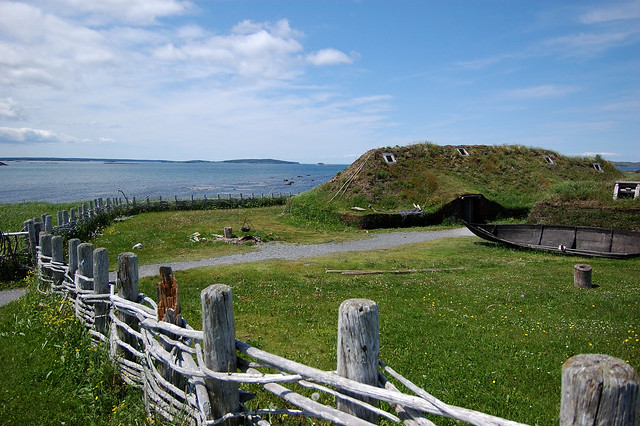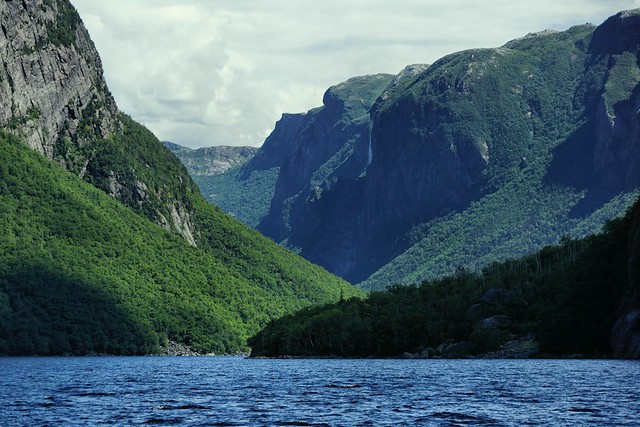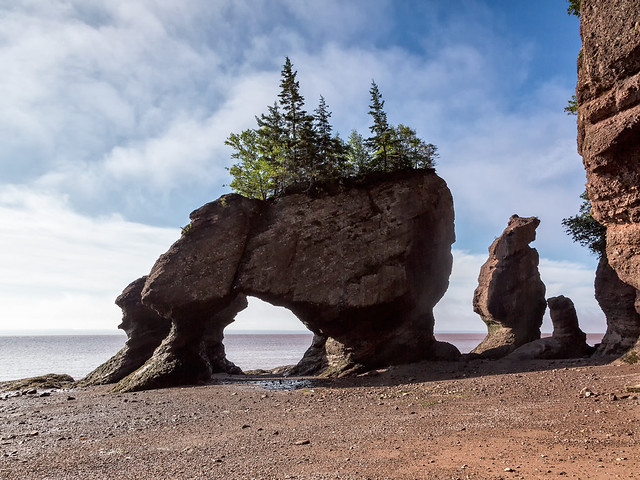
The Beothuk were the people originally inhabiting Newfoundland when Europeans first arrived. They were tall and strong, with dark eyes and black hair worn long in braids and decorated with feathers. They covered their bodies, clothes and weapons with red ochre mixed with oil. This protected their skin during the winter and against insects in the summer and they also believed it protected them from harmful spirits. Every spring they would gather by a lake or river for an ochering ceremony. During this ceremony they would apply a fresh coat of ochre to their skin and children born during the previous year would receive their first coating.
Each man had only one wife. The man looked after trapping, hunting and fighting. The woman cared for the children, looked after the fire, prepared food and made clothing. Elderly people were respected and stayed with the family.
The Beothuk tribe was broken down into bands of about 60-80 people. Each band had a chief who was respected by the people as a good hunter and leader. Decisions were made in a council.
Their clothing during cold weather was caribou hide, with the fur side against the body. The skins were scraped clean and then rubbed with animal brain. The hides were covered with red ochre to make them waterproof. They wore leggings, arm coverings, mocassins and mittens all made from caribou hide. A robe made of two skins sewn together crossed over the chest and was belted at the waist. It was trimmed with beaver or otter fur, with fringes decorated with shells, beads, animal teeth, claws and feathers tied on.
The men were excellent archers. They carved their harpoon heads, spear and arrow points from bone.
They made fire by striking iron pyrite together catching the sparks on dry moss.
They had no grain to make flour. Their diet consisted of small mammals and game birds, harp seals, whales, salmon, murre, puffins and guillemot.
The Beothuk were nomads, which means they didn’t have homes in one place, they moved their homes from one place to another during the year. In the fall, they moved to the forest to hunt caribou, and in the spring they would move to the coast to hunt seal, fish and seafood.
In the summer, they would dig out a shallow round pit. Several long poles would be tied together at the top and then the lower ends would be spread around in a circle. Small trees were bent into hoops and tied inside at different heights and then this frame would be covered in birch bark starting at the bottom and working up in layers like tiles. They would use spruce bark or caribou skins if necessary. In the middle would be the firepit and they would sleep around the outside in hollows lined with fir branches, grass or skins.
The winter houses were built in villages. They could be different shapes such as rectangles or many-sided. The walls were made from tree trunks and the cracks stuffed with moss. The roof would be cone-shaped like the summer houses and covered with three layers of birch bark with moss and sods between. The smoke hole would be held in place with clay. The entrance was covered with caribou skins. Earth would be banked up against the outside walls and the inside walls were covered with caribou skins.
Birchbark was a very important raw material. Pieces of the bark would be loosened so that the tree wouldn’t die. It was folded into dishes and tightly sewn with roots. Then they would decorate them with stitched patterns using split root strands, and cut the edges in sawtooth patterns.
They made canoes that could carry 8-10 people. They were high and curved in the front and the back, and had sides that rose high in the middle. The sides flared out from a central timber so that they were pointed in the middle. Birch bark would be sewn together to form a single sheet. The smooth inner bark became the outside of the canoe. A piece of spruce lay the length of the canoe in the centre and the bark was folded up. The upper edges were strengthened with spruce poles and it was sewn together with spruce roots. Cross bars were placed at the middle and each end, and wooden slats were laid along the bottom to protect the bar. Curved sticks were placed over them. The canoe was waterproofed with heated tree gum, charcoal and red ochre. Rocks were added to the bottom for ballast and covered with moss.
The men were excellent archers. They carved their harpoon heads, spear and arrow points from bone. They would make blunt arrows for killing birds. During the caribou hunting season, they would fence off areas where they crossed a river or lake and herd the caribou towards this. When the caribou were in the water they would spear them with their harpoons.
Sadly, when Europeans came to Newfoundland, the Beothuk were not able to carry on their lives as they always had. Many died of disease or starvation, or were killed by the white people until there were none left.
PROJECT: Make a cup or dish out of birch bark. wildwoodssurvival.com
BOOK: The Beothuk of Newfoundland: A Vanished People by Ingeborg Marshall, Breakwater Books Ltd., 1991.

















